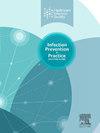Endogenous origin of Pseudomonas aeruginosa infecting hospitalized patients in Ecuador
IF 1.8
Q3 INFECTIOUS DISEASES
引用次数: 0
Abstract
Recent evidence suggests that Pseudomonas aeruginosa, a bacterium that has the ability to cause deadly infections in hospitalized patients, could originate in the patient's own flora. We employed the Oxford Nanopore platform to obtain whole genome sequences (WGS) from clinical and rectal screen P. aeruginosa strains belonging to 15 patients from two hospitals. Our study found evidence that clinical and rectal isolates were clonal, with some evidence suggesting that the infecting strain was present in the patient's intestine at the time of admission, ruling out hospital acquisition. The use of WGS analysis is crucial to detect alternative sources of P. aeruginosa to develop new preventive measures against these serious infections.
厄瓜多尔住院病人感染铜绿假单胞菌的内源性来源
最近的证据表明,铜绿假单胞菌是一种能在住院患者中引起致命感染的细菌,它可能源自患者自身的菌群。我们采用牛津纳米孔平台从两家医院 15 名患者的临床和直肠筛查铜绿假单胞菌菌株中获得了全基因组序列(WGS)。我们的研究发现,临床和直肠分离株具有克隆性,有证据表明感染菌株在患者入院时就存在于肠道中,排除了医院感染的可能性。使用 WGS 分析对于检测铜绿假单胞菌的其他来源以制定针对这些严重感染的新预防措施至关重要。
本文章由计算机程序翻译,如有差异,请以英文原文为准。
求助全文
约1分钟内获得全文
求助全文
来源期刊

Infection Prevention in Practice
Medicine-Public Health, Environmental and Occupational Health
CiteScore
4.80
自引率
0.00%
发文量
58
审稿时长
61 days
 求助内容:
求助内容: 应助结果提醒方式:
应助结果提醒方式:


